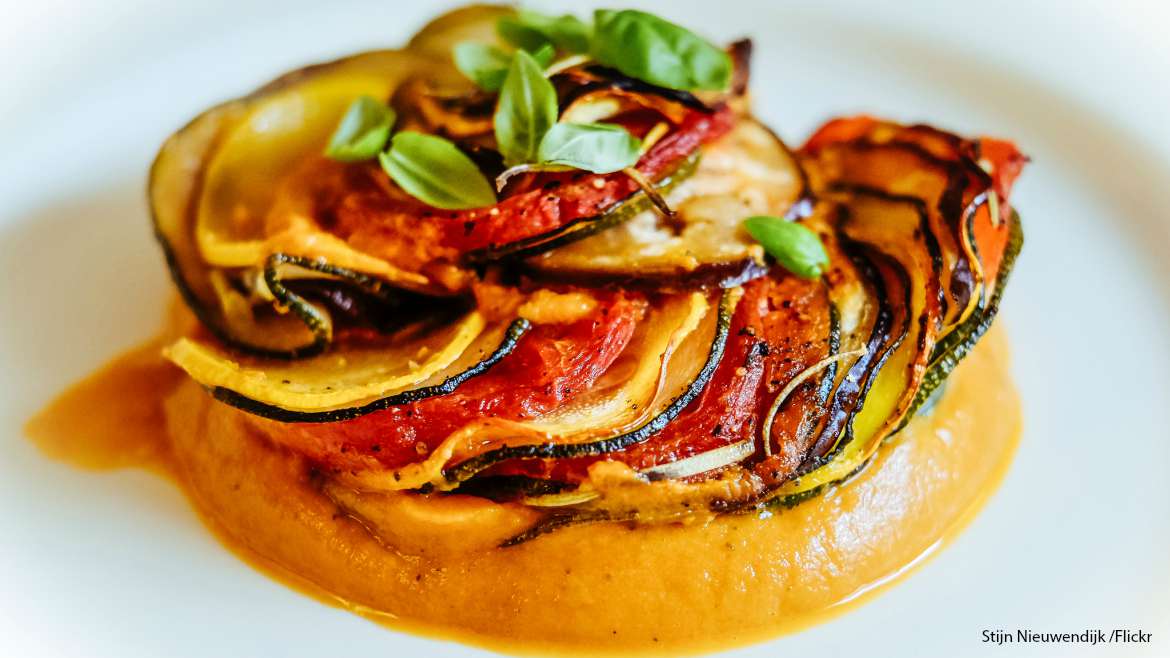
Proof that authentic and delicious French vegetarian food does exist
The classics of French cuisine are big, solid meaty dishes – the sort of thing that you need a nice lie down or heart bypass surgery after eating. That’s not to say, however, that the French don’t eat their greens. They absolutely do. Often served raw or as a salad at the start of a meal, or as a cooked side dish. So it is possible to eat food that is authentically French and vegetarian, you just may have to adapt it to make it a full meal. Here are some ideas to get you started!
Quiche
Think of a quiche and the image of a rich golden custard tart, studded with lardons, will probably come to mind. Not much fun for friends of piggies. But there’s more to quiches than the classic Lorraine: leeks, mushrooms, courgettes, tomatoes, spinach and goat’s cheese are frequently found suspended and set in luscious cream and egg, contained within crisp, buttery pastry. Avoid anything you can buy in the supermarket (invariably as cold, limp and insubstantial as a politician’s handshake) and go straight to a boulangerie to buy a wedge as deep as my love for wine and internet cats.
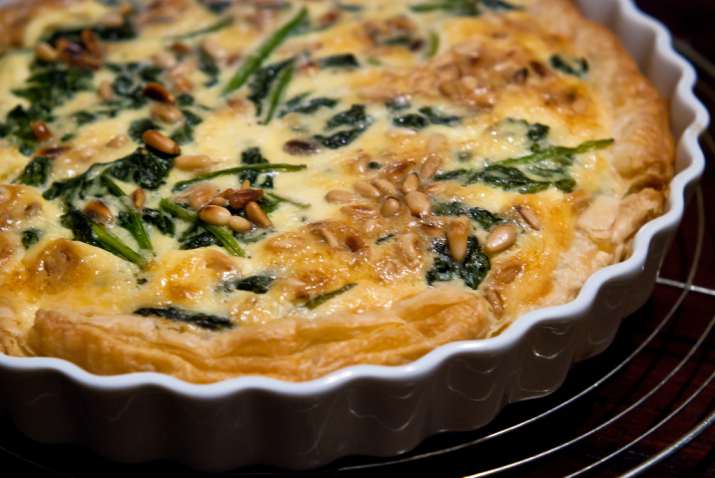
Photo: Stijn Neuiwendijk / CC 2.0
Summer vegetables
Summer is the best time to be vegetarian in France. The glut of Mediterranean vegetables – like aubergines, courgettes, peppers and tomatoes – bring colour and unparalleled depth of flavour to meals, as well as offering endless opportunities to experiment with combinations and textures. Roast peppers in oil with garlic, griddle aubergines until striped and smoky, stuff courgettes with fresh cheese and herbs, or deep fry filled courgette flowers for an exquisite crunchy texture. To ensure you get that Provençal feeling, wash down with a glass of chilled rosé.
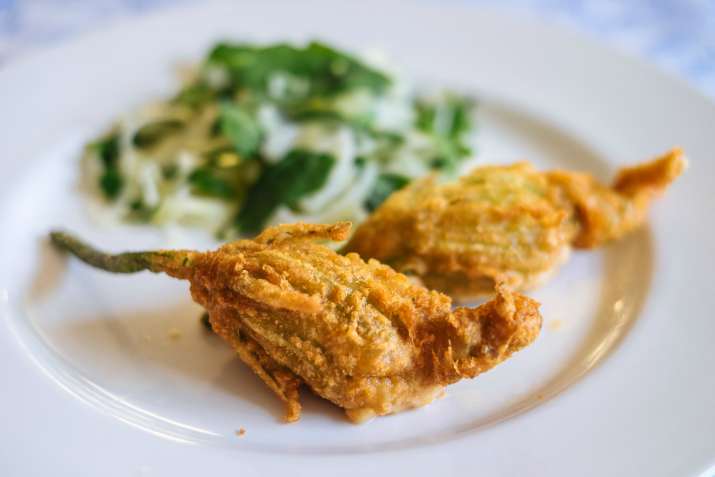
Photo: Stijn Nieuwendijk / CC 2.0
Ratatouille
As despised by French schoolchildren (mine anyway) as it is loved by cartoon rats, ratatouille is the undisputed king of French vegetarian food. And it’s vegan, too. Prepared badly, it can be a watery, sloppy, gloop of a dish with spongy textures and bitter flavours. But done well – well that’s something else altogether: tender, aromatic vegetables, scented with herbs and gushing with juice. It’s impossible to eat without feeling the sun on your face.
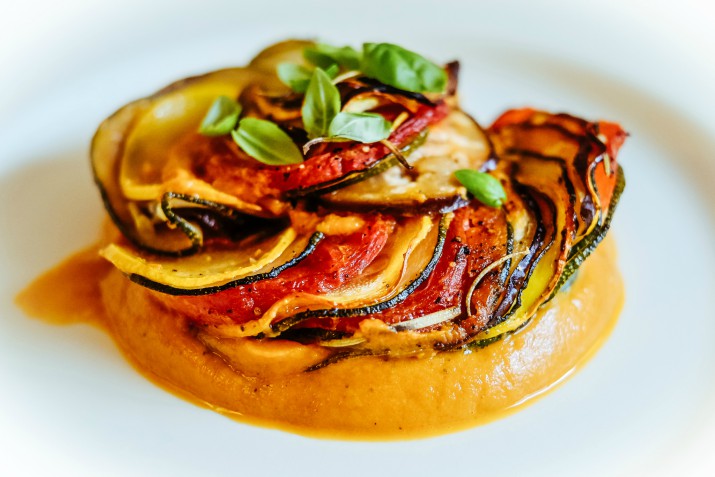
Photo: Stijn Nieuwendijk / CC 2.0
Piperade
This sweet, spicy, satisfying dish comes from Basque country, and you can taste the Spanish connection in the use of paprika, which gives the dish a lip-smacking, smoky depth. Cook tomatoes, sweet red chillies, green bell peppers, onions and garlic down in a pan to create a thick, chunky sauce. It shouldn’t be soupy but not completely dry either. Very often an egg is cracked directly onto the vegetables while still in the pan, or you can be all fancy and serve poached eggs on top, as shown.
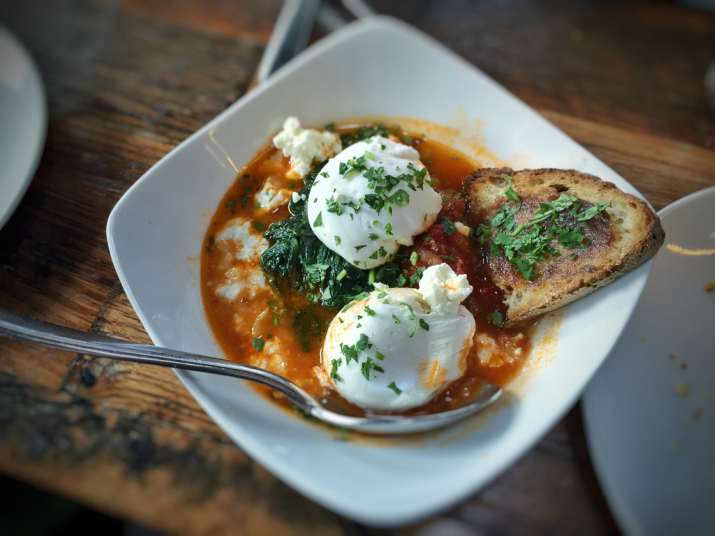
Soupe à l’oignon
You definitely won’t feel like you’re missing out with this one. Caramelise onions until dark, sweet and sticky to provide a rich, deeply flavoured base on which to add wine, water or stock. But – like a massage in a dodgy parlour – the brilliance of this soup is in the extras: toasted bread and a topping of gooey gruyère cheese, transform the soup into winter warmer masterpiece. Could anything be better on a drizzly grey day?
A word of warning: French onion soup is sometimes made with chicken stock, so check before getting stuck in.
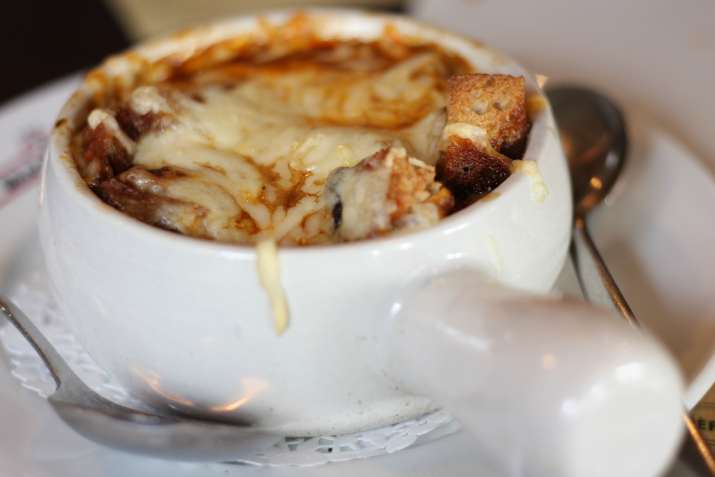
Hachis parmentier
The classic recipe involves layering buttery mashed potatoes on top of a base of ground beef, herbs, tomatoes and onions, before baking until golden in the oven. But why stop there, when endless veggie variations are possible? Try mushroom and lentils, carrot and leek, or sweet potato and tofu – the only limit is your vegetable tray and your imagination. Gratins are an excellent – and very French – way to consume veggies. Cauliflower, endives, fennel and squash are fabulous in winter. Pop them in a dish, cover in cream, cheese or stock, and bake until they become a blissful, fragrant hot mess.
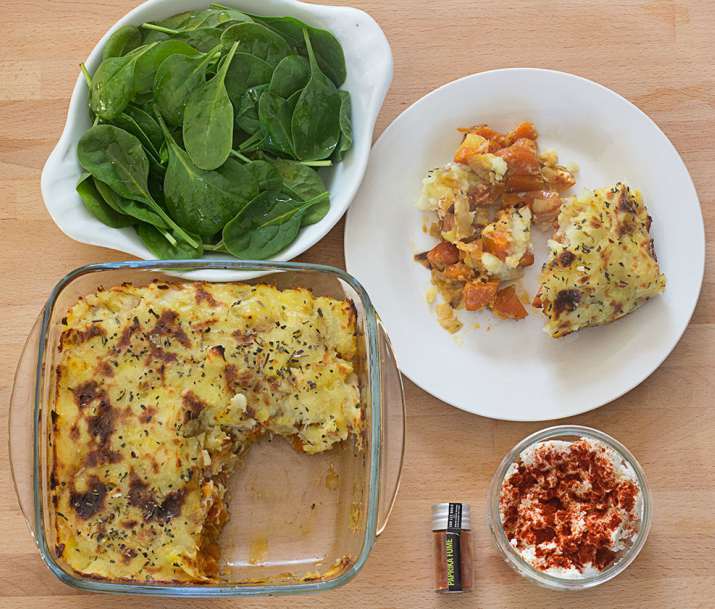
Photo: Franck Rouanet / CC 2.0
Flavoured breads
As with quiches, these are an easy and delicious way to pick up food on the run. Most boulangeries sell loaves dotted with olives, cheese and onions. Or you may find fougasse, a soft white holey bread, rich with olive oil, and topped with various salty yum nuggets like the aforementioned, plus tomatoes, potatoes, onions and herbs. Pescatarians can go further and try pissaladère, a pizza-like creation from Nice, with golden onions, olives and anchovies on a thin, crisp base. You won’t get a snog after eating it but I guarantee it’s worth it.
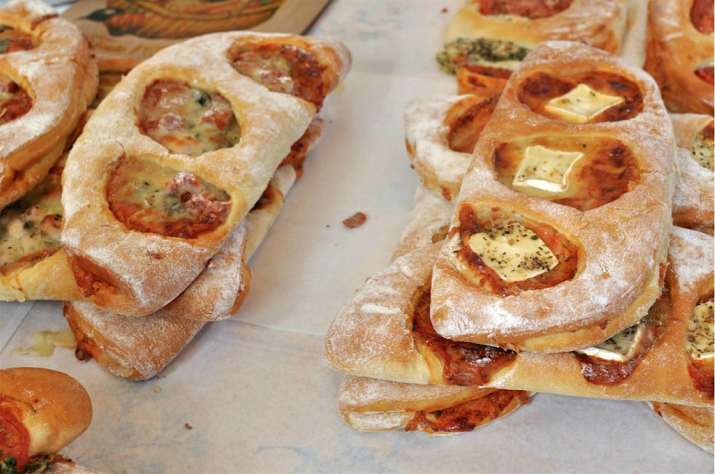
Photo: Monica Arellano-Ongpin / CC 2.0
Lentils
Hey, new vegetarian in France, I’d like to introduce you to your new best friend: this is lentil, say “Bonjour!” Puy lentils are a staple of the French kitchen, appearing in classic meaty dishes, like petit salé aux lentilles, but also as the basis of many and varied salads. The basic recipe involves cooking the lentils, then mixing them with a vinaigrette of wine vinegar, oil, shallots, mustard and parsley. The lentils can be served warm or cold, as an accompaniment to grilled goat’s cheese, poached egg or smoked salmon (again for those fish-eaters). Mix up the basic recipe by adding vegetables either during or after cooking. There’s a very good chance you’ll find a variant of this dish on a bistro menu, so your new BFF won’t let you go hungry.
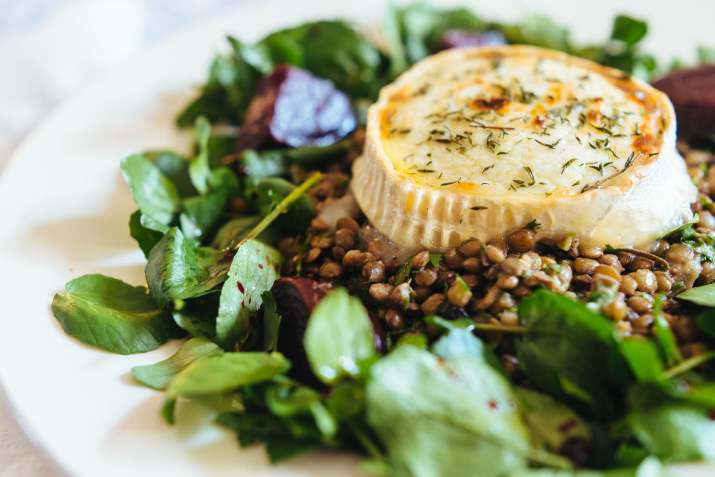
Photo: Stijn Nieuwendijk / CC 2.0
Tabbouleh
No doubt about it, this is a middle-eastern dish. I was hesitant to include it but it’s such a popular salad in France – pretty much ubiquitous in the chilled aisles, canteens, at picnics and barbecues – that I decided to risk cultural appropriation and here we are. Bulgur wheat, obscene amounts of parsley and mint, zingy lemon juice, juicy tomatoes, spring onions and oil combine to create a dish that’s both filling and fresh. It’s often served as a starter in France but you could bulk it out with goat’s cheese, tofu, or grilled veg to make a satisfying main course.
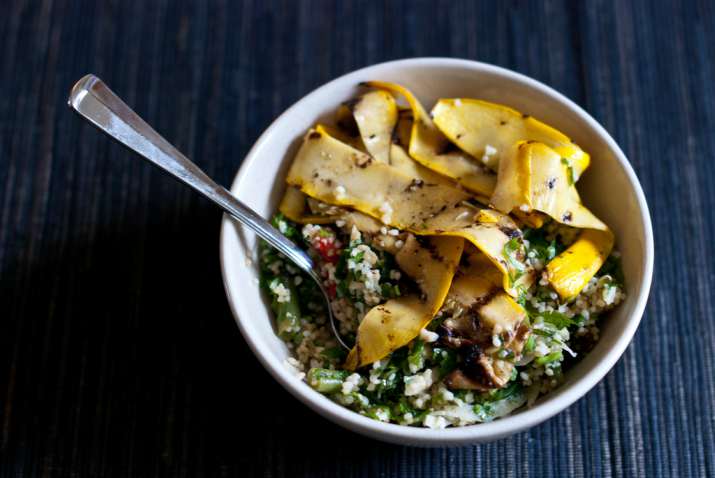
Photo: Stijn Neuiwendijk / CC 2.0
Pistou
OK, so the name may sound familiar but this sauce from Provence definitely isn’t the same as pesto and I’ll explain why: pistou is made from basil leaves, olive oil, garlic and grated hard cheese, whereas pesto is made from basil leaves, olive oil, garlic and grated hard cheese AND PINE NUTS. Worlds apart! Pistou is used in the same way as its famous Italian cousin: to give flavour to pasta or rice, to spread on bread, or to satisfy salt cravings by spooning directly from a jar in front of an open fridge, if you’re me. It’s also frequently dolloped on a French vegetable, bean and pasta soup that is absolutely not the same as minestrone. Got that?
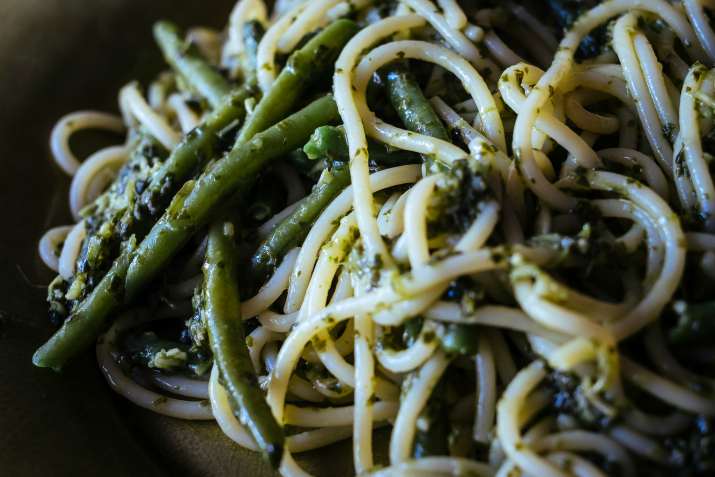
Photo: Stijn Nieuwendijk / CC 2.0
Omelettes
When something so simple is so good, why try harder? All you need is eggs and butter, perhaps some fresh herbs, and – VOILA! – you have a classic French dish. Purists look away now because what follows will upset you…. OBV you can add cheese! Melty hard cheeses like comté, gruyère and emmental work well, or there’s our old buddy goat’s cheese, or go crazy with a blue cheese, like roquefort. The complex, earthy flavour of mushrooms, like morilles, cèpes and chanterelles, complement the eggs perfectly.
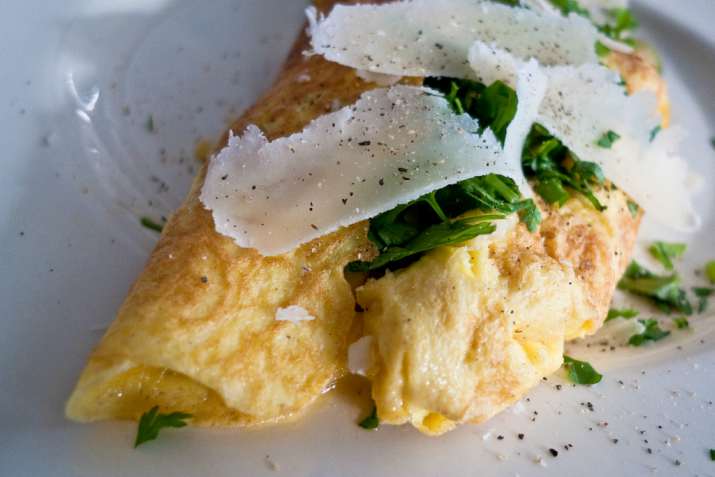
Photo: Stijn Nieuwendijk / CC 2.0
Quenelles
If there is one dish on this list that you’re unlikely to have heard of, I’m betting it’s this speciality of Lyon. Quenelles are similar to polenta or gnocchi – though lighter – and made using flour, eggs, butter and water. Heat the water, add the flour and butter, mix until it comes together in a paste – a bit like you’re making a white sauce – add eggs, then form into sausage shapes. Cook the quenelles in a pan, covered with the sauce of your choice. This is the point where you can go to town with the vegetarian options: bechamel, cheese, tomato, Provençal, mushroom… Make this dish your own.
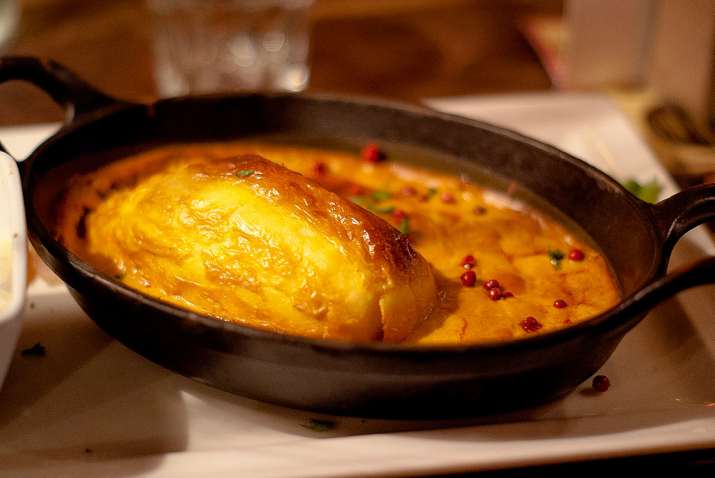
Photo: by Fryke27 / CC BY-SA 3.0
Oeufs cocotte
Feeling a bit poorly? Down in the dumps? Sometimes we need food that soothes the soul, as well as fills the belly. This last dish on the list fits the bill perfectly, involving indulgent ingredients and minimal effort. You’ll need a delightful individual oven dish or ramekin. Butter the dish, crack an egg in, cover with crème fraîche and top with cheese. Stick it in the oven for 12 minutes while you watch YouTube video compilations of animals being adorable, then enjoy your outrageously rich and delicious meal for one. You’ll want some bread to wipe up the extravaganza of goo.
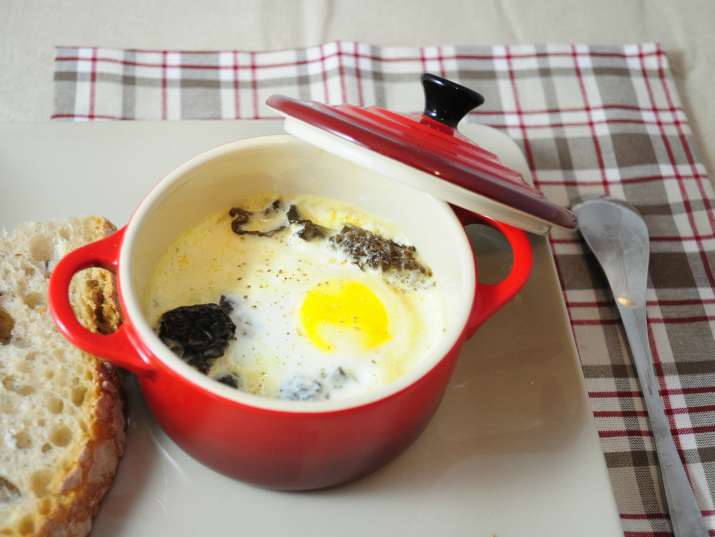
Photo: Frédérique Voisin-Demery / CC 2.0
Feeling peckish after all that? I certainly am. If you’re a vegetarian in France, please tell us about your experience. Are you able to find food to order when you go out? Are chefs obliging if you request modifications? Or are there any dishes that aren’t on the list? Let us know! And please like and share if you’ve enjoyed 🙂



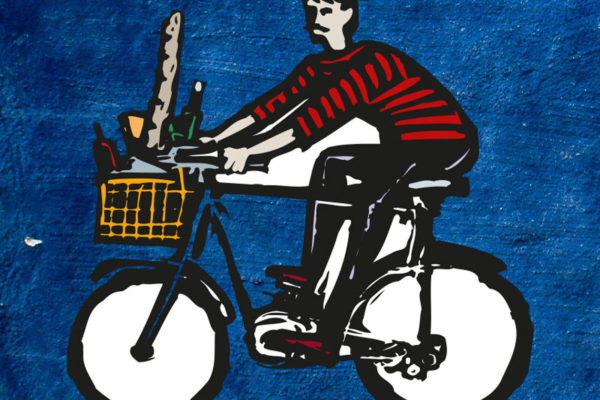
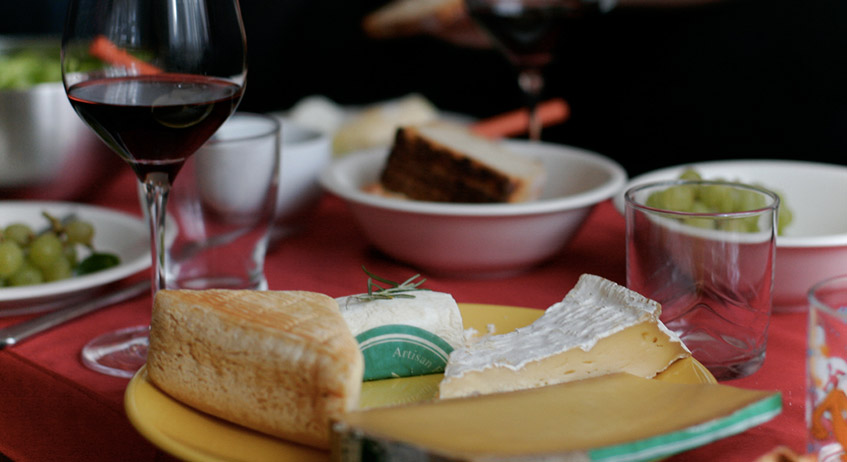
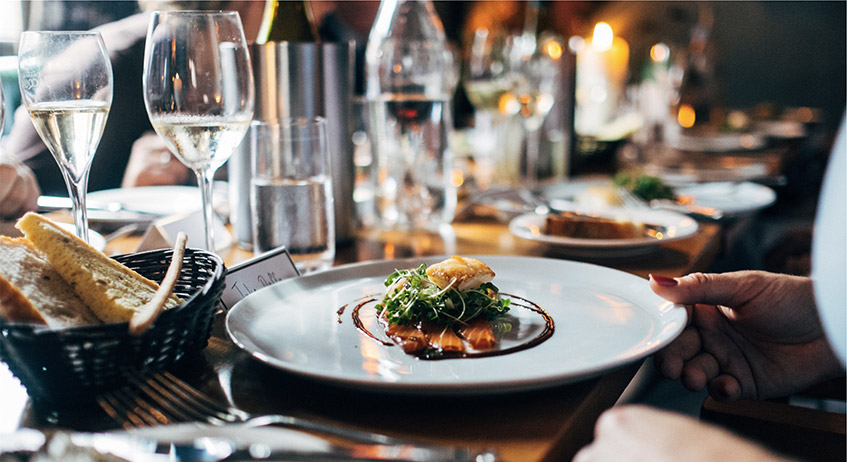
Patrick Gibson
That article was really inspiring. I’m visiting my adopted family here in Bordeaux and we’re looking for vegetarians alternatives. Sitting here at the dinner table planning our menu for the week…..I was just googling French vegetarian food and came across your article. I was reading it aloud and we all found it both entertaining and informative…..
Thank you….one love!
admin
Thank you, that was lovely to read!